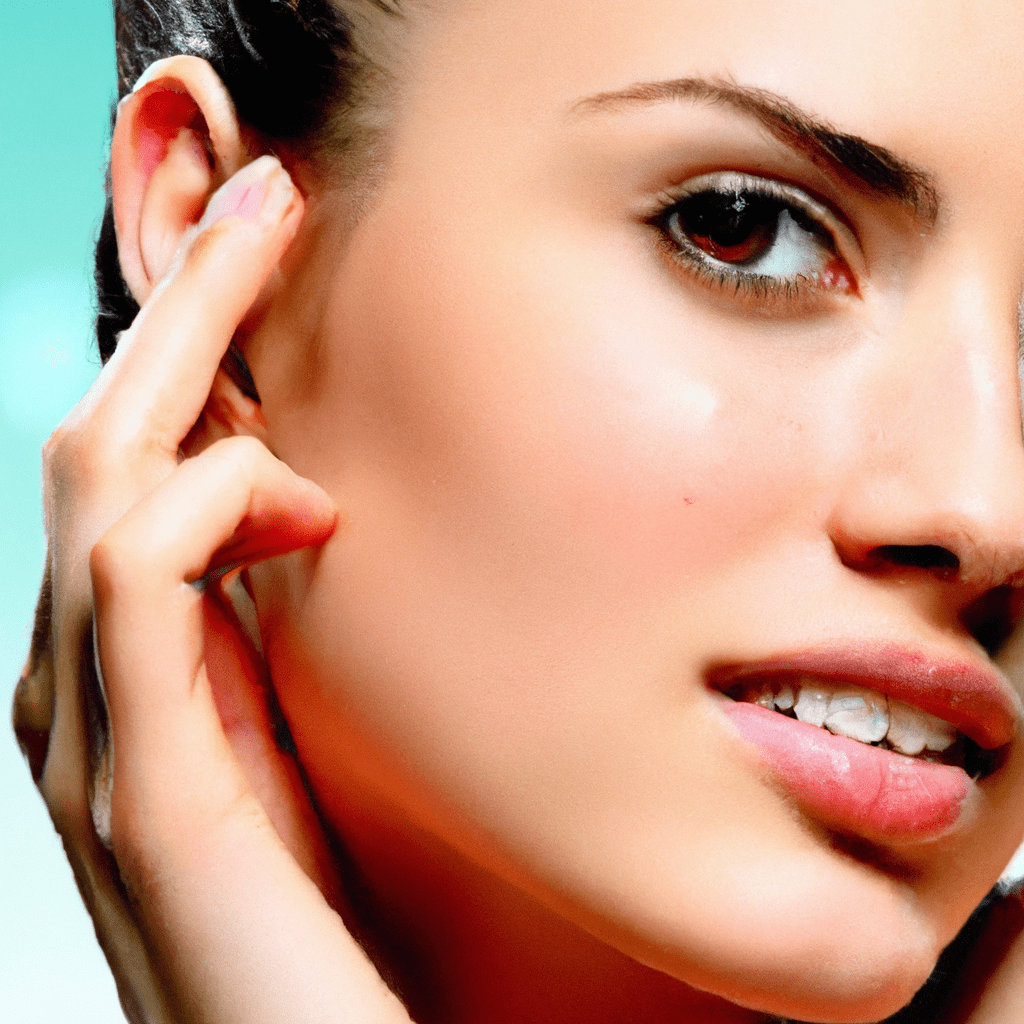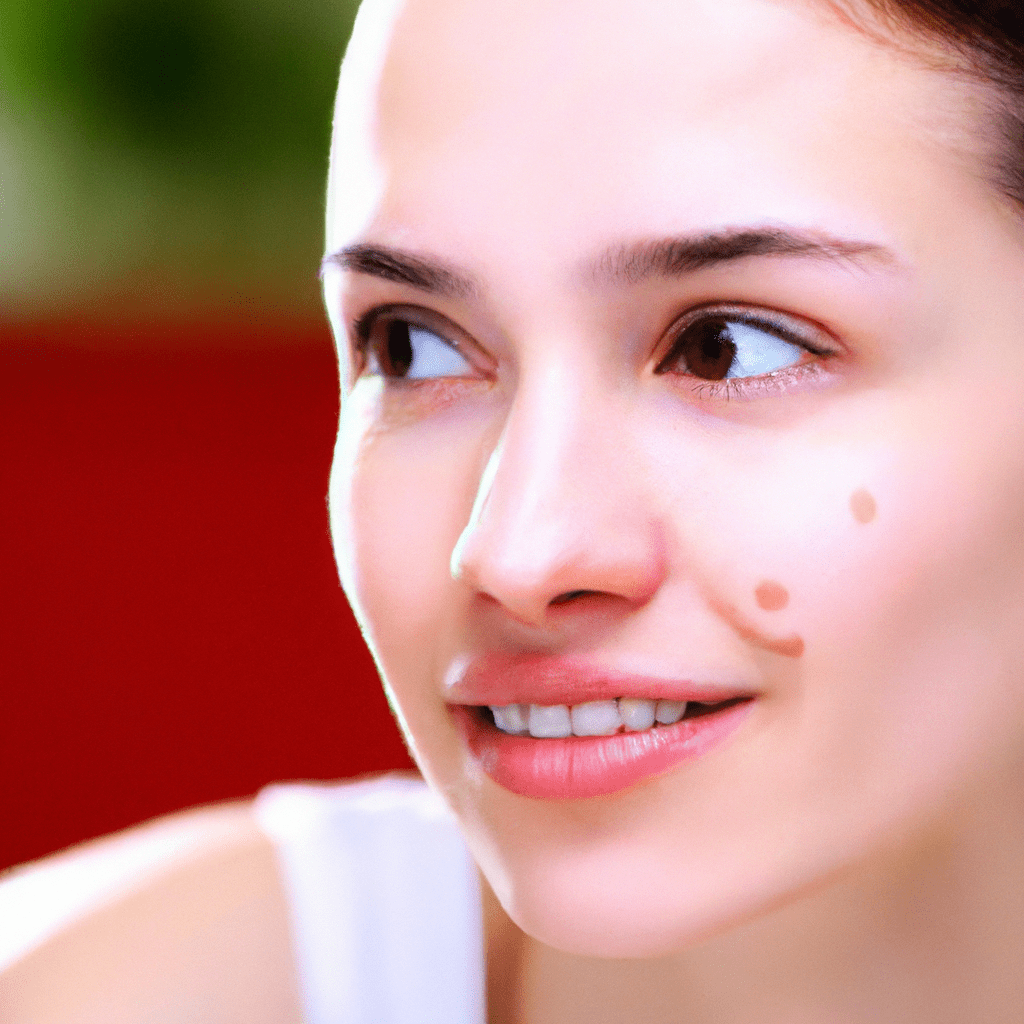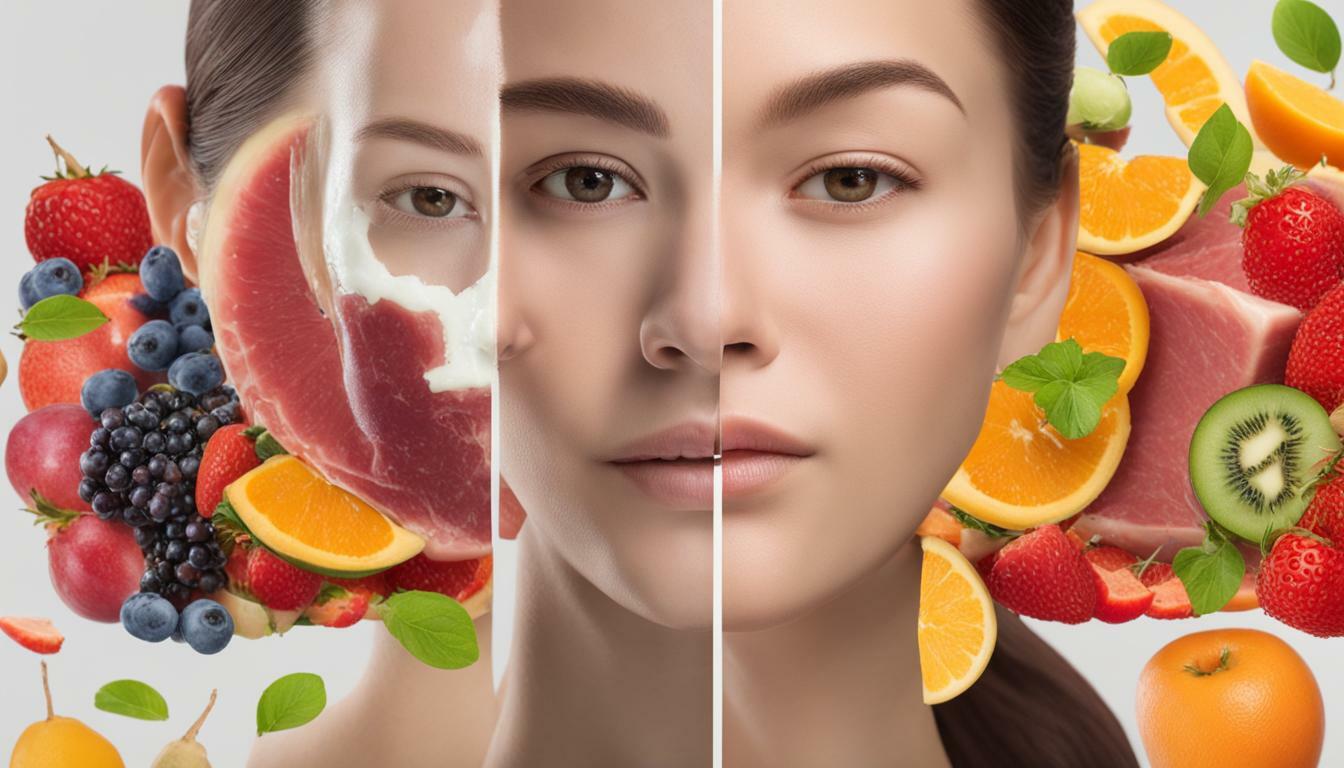Have you ever wondered what it means to have acne prone skin? How does it differ from other skin types? In this article, we will enlighten you on the characteristics of acne prone skin and the potential causes behind it. Understanding what acne prone skin means can help you take appropriate measures to prevent breakouts and keep your skin healthy and glowing. So, let’s explore the unique qualities of acne prone skin and discover effective ways to manage it.

Understanding Acne Prone Skin
Acne prone skin is a term used to describe skin that is more susceptible to developing acne breakouts. While acne can affect individuals of all ages and skin types, those with acne prone skin tend to experience more frequent and severe breakouts. It is important to understand the causes, symptoms, and factors that influence acne prone skin in order to effectively manage and treat this condition.
Defining Acne Prone Skin
Acne prone skin refers to skin that is prone to developing acne, which is a common skin condition characterized by the formation of pimples, blackheads, whiteheads, and cysts. Acne occurs when the hair follicles become clogged with oil, dead skin cells, and bacteria. This can lead to inflammation and the formation of various types of acne lesions.
Prevalence of Acne Prone Skin
Acne is one of the most prevalent skin conditions worldwide, affecting millions of people. While acne can occur at any age, it most commonly affects teenagers and young adults. Studies have shown that approximately 85% of individuals between the ages of 12 and 24 experience some form of acne. However, acne can also persist into adulthood, with around 20% of adults experiencing acne breakouts.
Causes of Acne Prone Skin
There are several factors that contribute to the development of acne prone skin. Hormonal imbalances, genetic predisposition, diet, and environmental factors can all play a role in the formation of acne. It is important to understand these underlying causes in order to effectively manage and treat acne prone skin.
Identifying Acne Prone Skin
In order to effectively manage and treat acne prone skin, it is essential to be able to identify its symptoms and distinguish it from normal skin or other skin conditions.
Common Symptoms of Acne Prone Skin
Acne prone skin is characterized by the presence of various types of acne lesions, such as pimples, blackheads, whiteheads, and cysts. These acne lesions can be accompanied by redness, inflammation, and pain. Additionally, individuals with acne prone skin may experience oily skin, uneven skin texture, and frequent breakouts.
Distinguishing Acne Prone Skin from Normal Skin
One way to distinguish acne prone skin from normal skin is by the presence of persistent and frequent acne breakouts. While individuals with normal skin may experience an occasional pimple or two, those with acne prone skin tend to have more frequent and severe breakouts. Additionally, acne prone skin often has a shiny or oily appearance, especially in the T-zone (forehead, nose, and chin).
Differentiating Acne Prone Skin from Other Skin Conditions
Acne prone skin can sometimes be mistaken for other skin conditions, such as rosacea or folliculitis. However, there are certain distinguishing factors that can help differentiate acne prone skin from these conditions. For example, rosacea typically presents with persistent redness, flushing, and visible blood vessels, while folliculitis is characterized by inflamed hair follicles. It is important to consult with a dermatologist to accurately diagnose and treat acne prone skin.
Factors Influencing Acne Prone Skin
Several factors can influence the development and severity of acne prone skin. Understanding these factors can help in managing and preventing acne breakouts.
Hormonal Imbalances and Acne
Hormonal imbalances, particularly during puberty, can contribute to the development of acne. Increased levels of androgens, a type of hormone, can stimulate the production of oil (sebum) in the skin, leading to clogged pores and acne breakouts. Hormonal changes can also occur during menstrual cycles and pregnancy, which may trigger or exacerbate acne in some individuals.
Genetic Predisposition to Acne
Genetics can also play a role in acne prone skin. If acne runs in your family, you may be more prone to developing acne breakouts. Certain genetic factors can influence the production of sebum, the function of hair follicles, and the body’s immune response, all of which can contribute to the development of acne.
Effect of Diet on Acne Prone Skin
While the relationship between diet and acne is still being studied, certain dietary factors have been found to potentially worsen acne breakouts. High glycemic index foods, such as refined sugars and carbohydrates, can cause a spike in blood sugar levels and increase inflammation in the body, which may contribute to the development of acne. Additionally, dairy products and foods high in saturated fats have been associated with an increased risk of acne breakouts in some individuals.
Environmental Factors and Skin Acne
Environmental factors, such as humidity and pollution, can also influence the development and severity of acne prone skin. High humidity levels can increase oil production in the skin, leading to clogged pores and acne breakouts. Exposure to pollutants, such as air pollution and cigarette smoke, can also contribute to inflammation in the skin, worsening acne symptoms.
Types of Acne Prone Skin
Acne prone skin can manifest in different types of acne, each with its own characteristics and treatment approaches.
Comedonal Acne
Comedonal acne is characterized by the presence of comedones, which are non-inflammatory acne lesions. Comedones can be either open (blackheads) or closed (whiteheads), and are caused by the accumulation of oil, dead skin cells, and bacteria in the hair follicles. This type of acne is often seen in individuals with oily skin.
Inflammatory Acne
Inflammatory acne is characterized by the presence of inflamed acne lesions, such as papules, pustules, and nodules. These lesions are often red, tender, and painful to touch. Inflammatory acne occurs when the clogged hair follicles become infected and inflamed, leading to the formation of these types of acne lesions.
Cystic Acne
Cystic acne is a more severe form of acne that is characterized by the presence of large, deep, and painful cysts. These cysts are typically filled with pus and can cause significant inflammation and scarring. Cystic acne often requires medical intervention and may leave long-lasting marks on the skin.
Hormonal Acne
Hormonal acne is acne that is specifically triggered by hormonal fluctuations in the body. It often occurs in women during menstrual cycles, pregnancy, and menopause. This type of acne is typically characterized by breakouts around the chin, jawline, and cheeks. Hormonal acne can be challenging to manage and may require hormonal treatment approaches.

Skin Care Routine for Acne Prone Skin
Establishing a proper skin care routine is crucial for managing and treating acne prone skin. A consistent and tailored routine can help reduce acne breakouts and improve the overall health of the skin.
Cleansing Techniques for Acne Prone Skin
When it comes to cleansing acne prone skin, gentle and non-irritating techniques are key. Over-washing or using harsh cleansers can strip the skin of its natural oils and disrupt its barrier function, leading to more oil production and potential irritation. It is recommended to use a mild cleanser specifically formulated for acne prone skin, and to cleanse the face twice a day – once in the morning and once in the evening.
Choosing Suitable Products
Selecting the right products for acne prone skin can make a significant difference in the management of acne breakouts. Look for products that are labeled non-comedogenic, meaning they are less likely to clog the pores. Additionally, ingredients such as salicylic acid and benzoyl peroxide can be beneficial for acne prone skin, as they help to unclog pores and reduce inflammation.
Moisturizing and Sun Protection
Contrary to popular belief, moisturizing is essential for acne prone skin. Using a lightweight, oil-free moisturizer can help maintain the skin’s hydration without exacerbating acne breakouts. Additionally, it is important to protect the skin from harmful UV rays by applying a broad-spectrum sunscreen with an SPF of 30 or higher.
Incorporating Exfoliation
Exfoliation can help remove dead skin cells and unclog pores, but it should be done with caution for acne prone skin. Over-exfoliating can irritate the skin and worsen acne symptoms. It is recommended to use a gentle exfoliant, such as a chemical exfoliant containing alpha-hydroxy acids or beta-hydroxy acids, and to limit exfoliation to once or twice a week.
Treating Active Acne
In addition to a regular skin care routine, the treatment of active acne breakouts is crucial. Over-the-counter treatments containing ingredients like benzoyl peroxide or salicylic acid can be used to target individual pimples. However, severe or persistent acne may require prescription medications or dermatological treatments, such as topical or oral antibiotics, retinoids, or chemical peels.
Professional Help and Dermatological Treatments
If acne breakouts persist or become severe, it is important to seek professional help from a dermatologist. A dermatologist can provide an accurate diagnosis, prescribe appropriate medications, and perform advanced treatments that may be necessary for managing acne prone skin. Options such as laser therapy, light therapy, and extraction of deep cysts can be effective in treating stubborn acne.
Lifestyle Modifications to Prevent Acne Breakouts
In addition to a proper skin care routine, certain lifestyle modifications can help prevent acne breakouts and improve the overall health of the skin.
Maintaining a Healthy Diet
While there is no definitive link between diet and acne, adopting a healthy and balanced diet can support overall skin health. Incorporating plenty of fruits, vegetables, whole grains, and lean proteins into your diet can provide essential nutrients that promote healthy skin. Additionally, reducing the intake of high glycemic index foods, dairy products, and foods high in saturated fats may be beneficial for some individuals.
Managing Stress Levels
Stress can trigger or worsen acne breakouts. Finding healthy ways to manage stress, such as practicing relaxation techniques, engaging in physical activity, or seeking therapy, can help reduce the impact of stress on the skin. It is important to prioritize self-care and find activities that promote relaxation and mental well-being.
Exercising Regularly
Regular exercise not only benefits overall health but can also contribute to healthy skin. Exercise helps increase blood circulation, which can deliver essential nutrients and oxygen to the skin cells. However, it is important to maintain good hygiene practices by showering and cleansing the skin after exercising to prevent sweat and oil buildup, which can clog pores.
Getting Sufficient Sleep
Adequate sleep is crucial for overall health and skin function. During sleep, the body repairs and rejuvenates itself, including the skin. Lack of sleep can lead to increased stress levels, hormonal imbalances, and weakened immune responses, all of which can contribute to acne breakouts. Aim for 7-9 hours of quality sleep per night to support optimal skin health.
Avoiding Touching or Picking at the Skin
Touching or picking at the skin can introduce bacteria and irritants, leading to inflammation and potential scarring. It is important to avoid touching the face unnecessarily and to refrain from picking at acne lesions. If necessary, using clean hands or a clean tissue to apply skincare products or to address any skin concerns can help minimize the risk of further irritation.
Avoiding Heavy Makeup and Certain Hair Products
Cosmetics and hair products can contribute to clogged pores and acne breakouts, especially if they are heavy or contain pore-clogging ingredients. Opt for non-comedogenic and oil-free makeup products, and avoid heavy foundations or concealers that can suffocate the skin. Additionally, be cautious with hair products that contain oils or silicones, as they can transfer onto the skin and contribute to the formation of acne.

Recommended Ingredients and Products
Certain ingredients and products have been found to be particularly beneficial for acne prone skin. Incorporating these into your skincare routine can help manage and improve the condition of the skin.
Salicylic Acid
Salicylic acid is a beta-hydroxy acid that helps exfoliate the skin, unclog pores, and reduce inflammation. It is commonly found in cleansers, toners, and spot treatments specifically formulated for acne prone skin. Salicylic acid can help reduce acne breakouts and improve the overall texture and tone of the skin.
Benzoyl Peroxide
Benzoyl peroxide is an ingredient that has both antibacterial and anti-inflammatory properties. It works by reducing the levels of acne-causing bacteria on the skin and reducing inflammation. Benzoyl peroxide is available in various strengths and forms, such as cleansers, gels, and creams, and can be an effective treatment option for mild to moderate acne.
Retinoids
Retinoids, such as retinol or prescription-strength tretinoin, are derivatives of vitamin A that help regulate skin cell turnover and reduce the formation of acne. They also have anti-inflammatory properties and can help improve the appearance of acne scars. However, retinoids can be irritating to the skin and should be introduced gradually and used under the guidance of a dermatologist.
Tea Tree Oil
Tea tree oil is a natural ingredient that has antimicrobial and anti-inflammatory properties. It can help reduce acne-causing bacteria on the skin and reduce inflammation associated with acne breakouts. Tea tree oil can be diluted and applied topically as a spot treatment, but it is important to perform a patch test first to ensure there is no sensitivity or allergic reaction.
Hyaluronic Acid
Hyaluronic acid is a humectant that helps attract and retain moisture in the skin. While acne prone skin may be oily, it still requires hydration to maintain a healthy barrier function. Hyaluronic acid can help provide lightweight hydration without clogging the pores or exacerbating acne breakouts. Look for oil-free, non-comedogenic moisturizers that contain hyaluronic acid.
Non-Comedogenic Products
When selecting products for acne prone skin, it is important to choose those that are non-comedogenic. Non-comedogenic products are specifically formulated to avoid clogging the pores and exacerbating acne breakouts. They are less likely to contain ingredients that contribute to acne, such as oils or heavy emollients. Always check the product labels for the non-comedogenic claim.
Tips for Dealing with Acne Prone Skin
Dealing with acne prone skin can be challenging, but implementing certain tips and strategies can help manage and improve the condition of the skin.
Avoiding Overwashing or Over-Exfoliating
While it may be tempting to cleanse and exfoliate the skin frequently in an attempt to remove excess oil and dead skin cells, overwashing or over-exfoliating can actually worsen acne breakouts. It can strip the skin of its natural oils and disrupt its barrier function, leading to increased oil production and potential irritation. Stick to a gentle cleansing and exfoliating routine as mentioned earlier.
Maintaining Consistency in Skin Care Routine
Consistency is key when it comes to managing acne prone skin. Stick to a regular skin care routine and give it time to show results. It can take several weeks or even months to see significant improvements in acne breakouts. Switching products frequently or using too many different products at once can disrupt the skin’s balance and potentially worsen acne symptoms.
Avoiding Squeezing or Popping Pimples
As tempting as it may be to squeeze or pop pimples, this can lead to increased inflammation, infection, and potential scarring. It is best to avoid touching or manipulating acne lesions and let them heal naturally. If necessary, consult with a dermatologist who can provide safe and effective treatment options for active acne breakouts.
Managing Acne Scars and Hyperpigmentation
Acne breakouts can sometimes leave behind scars or hyperpigmentation. It is important to address these concerns and take steps to minimize their appearance. Over-the-counter products containing ingredients such as vitamin C, niacinamide, or azelaic acid can help fade hyperpigmentation and improve the overall texture and tone of the skin. For more severe or persistent scars, professional treatments such as chemical peels, microneedling, or laser therapy may be necessary.
Seeking Professional Advice
If acne breakouts persist or become severe, it is highly recommended to seek professional advice from a dermatologist. A dermatologist can assess the condition of your skin, provide an accurate diagnosis, and recommend appropriate treatment options. They may prescribe topical or oral medications, perform advanced treatments, or provide guidance on lifestyle modifications that can help manage acne prone skin effectively.
Remaining Patient and Positive
Managing acne prone skin can be a journey, and it is important to remain patient and positive throughout the process. Results may not be immediate, and finding the right combination of products and treatments for your skin can take time. Remember that acne is a common skin condition that can be successfully managed with the right approach and support. Stay consistent with your skin care routine, seek professional advice when needed, and practice self-care to maintain a positive mindset.

Acne Prone Skin and Makeup
Individuals with acne prone skin may feel hesitant about using makeup, fearing that it may worsen their acne breakouts. However, with the right products and techniques, it is possible to wear makeup without aggravating acne.
Choosing Suitable Foundation and Concealers
When selecting foundation and concealers for acne prone skin, it is important to choose products that are non-comedogenic, oil-free, and lightweight. Look for formulations that allow the skin to breathe and do not clog the pores. Avoid heavy, full-coverage foundations that can suffocate the skin and potentially worsen acne breakouts.
Applying Makeup on Acne Prone Skin
To apply makeup on acne prone skin, start by prepping the skin with a clean and hydrated base. Use a gentle cleanser and lightweight moisturizer suitable for acne prone skin. Apply a primer specifically formulated for acne prone skin to ensure a smooth canvas for makeup application. Use a foundation brush or sponge to apply foundation, starting from the center of the face and blending outward. Apply concealer only where necessary and use a light hand to avoid caking or exacerbating acne lesions.
Removing Makeup Properly
Properly removing makeup at the end of the day is essential for maintaining healthy skin and preventing acne breakouts. Use a gentle makeup remover or cleansing oil to dissolve and remove makeup effectively. Follow up with a mild cleanser to thoroughly cleanse the skin and remove any remaining makeup residue. Avoid harsh scrubbing or rubbing, as this can irritate the skin and potentially worsen acne.
Considering Mineral or Natural Makeup
For individuals with sensitive or acne prone skin, mineral or natural makeup can be a good option. These types of makeup typically contain fewer irritating ingredients and are less likely to clog the pores. Look for mineral makeup formulations that do not contain added fragrances, oils, or preservatives. Always patch-test new products before applying them to the entire face to ensure compatibility with your skin.
Conclusion
Understanding acne prone skin is key to effectively managing and treating this common skin condition. By recognizing the symptoms, identifying the underlying causes, and implementing a comprehensive skin care routine, individuals with acne prone skin can minimize breakouts, improve skin health, and boost their confidence. It is important to remember that managing acne prone skin is a journey that requires patience, consistency, and sometimes professional guidance. By taking the necessary steps to manage and treat acne prone skin, individuals can regain control and achieve clearer, healthier, and more radiant skin.





